pacific northwest
 In order to support a hurricane or typhoon, an area has to have one ingredient…warm ocean temperatures, generally above 82° F. The warm water sustains hurricanes and allows them to grow stronger. On the other hand, cooler sea surface temperatures will cause hurricanes to weaken, and in most cases, die out. The biggest difference between the East and West coasts of the United States are the sea surface temperatures. Because the Gulf Stream flows northwards along the East Coast, while sea surface temperatures along the West Coast are significantly cooler, the West Coast cannot usually sustain hurricanes. Of course, that doesn’t mean that it is impossible, as is shown in the 1962 Columbus Day Storm…also called the Big Blow and in Canada, Typhoon Freda.
In order to support a hurricane or typhoon, an area has to have one ingredient…warm ocean temperatures, generally above 82° F. The warm water sustains hurricanes and allows them to grow stronger. On the other hand, cooler sea surface temperatures will cause hurricanes to weaken, and in most cases, die out. The biggest difference between the East and West coasts of the United States are the sea surface temperatures. Because the Gulf Stream flows northwards along the East Coast, while sea surface temperatures along the West Coast are significantly cooler, the West Coast cannot usually sustain hurricanes. Of course, that doesn’t mean that it is impossible, as is shown in the 1962 Columbus Day Storm…also called the Big Blow and in Canada, Typhoon Freda.
The Columbus Day Storm was a Pacific Northwest windstorm that struck the West Coast of Canada and the Pacific Northwest coast of the United States on October 12, 1962. Starting out as a tropical disturbance over the Northwest Pacific on September 28th, the storm was the twenty-eighth tropical depression, the twenty-third tropical storm, and the eighteenth typhoon of the 1962 Pacific typhoon season. The system strengthened on October 3rd and became a tropical storm. At that time, it was given the name Freda, but later that day it became a typhoon as it moved northeastward. Before long the storm intensified, reaching its peak as a Category 3-equivalent typhoon on October 5th, with maximum 1-minute sustained winds of 115 mph and a minimum central pressure of 948 millibars. The storm maintained its intensity for another day, and then gradually weakened on October 6th. By October 9th, Freda had weakened into a tropical storm, and it looked 
 like the Pacific Northwest would dodge a bullet. Then Freda transitioned into an extratropical cyclone on October 10th. Freda turned eastward and accelerated across the North Pacific on October 11th, and finally made before striking the Pacific Northwest the next day. On October 13th, the cyclone made landfall on Washington and Vancouver Island, and then curved northwestward. After ripping through the west coast of the Washington and Canada, the system moved inland in Canada and weakened. By October 17th, it was absorbed by another developing storm to the south, and the event was over.
like the Pacific Northwest would dodge a bullet. Then Freda transitioned into an extratropical cyclone on October 10th. Freda turned eastward and accelerated across the North Pacific on October 11th, and finally made before striking the Pacific Northwest the next day. On October 13th, the cyclone made landfall on Washington and Vancouver Island, and then curved northwestward. After ripping through the west coast of the Washington and Canada, the system moved inland in Canada and weakened. By October 17th, it was absorbed by another developing storm to the south, and the event was over.
Nevertheless, the Columbus Day Storm of 1962 is considered to be the benchmark of extratropical windstorms to this day. As storm ranking goes, the Columbus Day Storm is listed as being among the most intense to strike the region since at least 1948, and quite likely since the January 9, 1880 “Great Gale” and snowstorm. With respect to wind velocity, the storm is also considered a contender for the title of the most powerful extratropical cyclone recorded in the United States in the 20th century. Even the March 1993 “Storm of the Century” and the “1991 Halloween Nor’easter” (“The Perfect Storm”) were no match. The system that drove the Columbus Day Storm brought strong winds to the Pacific Northwest and southwest Canada, was linked to 46 fatalities in the northwest and Northern California as a result of heavy rains and mudslides.

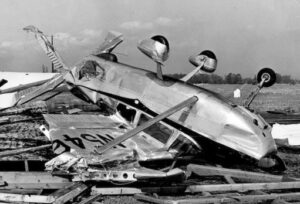
Normally, the storms that originate in the Pacific tend to weaken and die out as they reach the colder waters there. most don’t even recurve into the west coast after the leave the warmer gulf waters and head across Mexico. That is what made the Columbus Day storm so unusual for the area in which it took place.
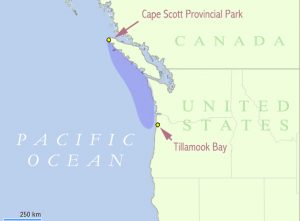
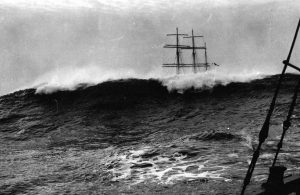 When my daughter, Amy Royce and her family moved to Washington state a few years ago, I began to take an interest in the Pacific Northwest. I think mostly it was so that I could tell her about things to go see. I don’t know how interested a non-tourist is about those things, but I have certainly found that I am.
When my daughter, Amy Royce and her family moved to Washington state a few years ago, I began to take an interest in the Pacific Northwest. I think mostly it was so that I could tell her about things to go see. I don’t know how interested a non-tourist is about those things, but I have certainly found that I am.
Like anyplace where there is shipping, there is likely to be shipwrecks. The Great Lakes, with their horrible weather conditions in the winter months, are littered with them. The waters of the Pacific Northwest have somehow always seemed rather benign to me, but as I learned about an area called The Graveyard of the Pacific, it occurred to me that maybe they are anything but benign. The Graveyard of the Pacific is a somewhat loosely defined stretch of the Pacific Northwest coast stretching from around Tillamook Bay on the Oregon Coast, running northward past the treacherous Columbia Bar and Juan de Fuca Strait, and up the rocky western coast of Vancouver Island to Cape Scott. Unpredictable weather conditions, fog and coastal characteristics such as shifting sandbars, tidal rips and rocky reefs and shorelines which are common to the area, have claimed more than 2,000 shipwrecks in this area. That makes the area, in my mind anyway, practically cluttered with debris.
In a way, it makes perfect sense, given the fact that many of our nation’s storms enter the continental United States from that area…excluding the tropical hurricanes, of course. With the unpredictable and frequently heavy weather and a rocky coastline, especially along Vancouver Island and its northwestern tip at Cape Scott, have endangered and wrecked thousands of marine vessels since European exploration of the area began in the 18th century. The area has claimed more than 2000 vessels and 700 lives near the Columbia Bar alone, and one book about shipwrecks lists 484 wrecks at the south and west sides of Vancouver Island. Combinations of fog, wind, storm, current and waves have crashed hundreds of ships in the region by the middle of the twentieth century, including famous wrecks in regional history.
The area is home to some famous and dangerous landmarks…Columbia Bar, a giant sandbar at the mouth of the Columbia River; Cape Flattery Reefs and rocks lining the west coast of Vancouver Island; and the Strait of San Juan de Fuca. The shipwreck charts of the area are studded with wreck sites. There have been a number of salvage attempts, but they are often unsuccessful or of limited success, and physical wreckage is usually minimal anyway due to the age of many wrecks. The weather is very unpredictable and the sea conditions harsh. This brings extensive damage to the vessels at the time they were wrecked.
The term, The Graveyard of the Pacific is believed to have originated from the earliest days of the maritime fur trade, not only as increasing numbers of traders’ ships began to be wrecked, but also because of the ongoing 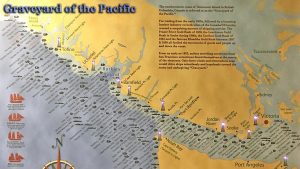
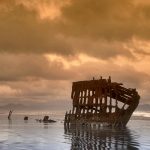 state of incipient warfare in the area between Russia, Spain, Great Britain, and native tribal peoples, making it one of the most dangerous and deadly regions to trade in the Pacific for political as well as climatic reasons. Although major wrecks have declined since the 1920s, several lives are still lost annually. The Graveyard of the Pacific remains a dangerous area, but with modern science, storms aren’t as unpredictable, so watching weather reports can prevent many dangerous situations.
state of incipient warfare in the area between Russia, Spain, Great Britain, and native tribal peoples, making it one of the most dangerous and deadly regions to trade in the Pacific for political as well as climatic reasons. Although major wrecks have declined since the 1920s, several lives are still lost annually. The Graveyard of the Pacific remains a dangerous area, but with modern science, storms aren’t as unpredictable, so watching weather reports can prevent many dangerous situations.
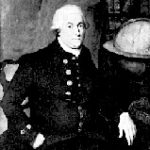
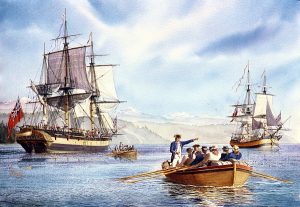 In the years between 1791 and 1794, a man named Captain George Vancouver was exploring the Pacific Northwest area which would eventually become part of the United States of America. Captain Vancouver was the commander of the HMS Discovery and its accompanying ships sent to survey the northern Pacific Ocean. It was Vancouver and his crew who first recorded the sighting of Mount Saint Helens, and the first to explore Puget Sound. Following the coasts of Oregon and Washington and intending to explore every bay and outlet of the region, he sent men in smaller boats to explore the Columbia River and enter the strait of Juan de Fuca.
In the years between 1791 and 1794, a man named Captain George Vancouver was exploring the Pacific Northwest area which would eventually become part of the United States of America. Captain Vancouver was the commander of the HMS Discovery and its accompanying ships sent to survey the northern Pacific Ocean. It was Vancouver and his crew who first recorded the sighting of Mount Saint Helens, and the first to explore Puget Sound. Following the coasts of Oregon and Washington and intending to explore every bay and outlet of the region, he sent men in smaller boats to explore the Columbia River and enter the strait of Juan de Fuca.
Vancouver commanded a variety of ships to complete his mission, so while the smaller vessels explored the many channels and rivers along the coast, the larger ships, including the Armed Tender of the HMS Discovery, called the Chatham, often anchored in safe harbors. On April 29, 1792, the ships entered the Straits of Juan de Fuca and anchored in the calm waters of Discovery Bay. Utilizing the bay as a base, Vancouver and his men explored the waters of Admiralty Inlet and Hood Canal.
Several weeks later, the Chetham began to sail north across the Straits of Juan de Fuca to explore the San Juan and Lopez Islands. After successfully doing so, the Chatham sailed southward in May to rejoin the HMS Discovery and continue their explorations south. The explorations continued as far as Commencement Bay in Tacoma, before turning around and returning north, where the waters were safer. Arriving at Puget Sound, they found a storm raging with severe currents and tides. Crossing an unknown channel, the Chatham was caught by a flood tide and swept helpless. To slow her progress, her stream anchor was dropped but the strain was too much and the cable snapped. However, the Chatham survived and after sweeping the waters unsuccessfully for the anchor, the ship rejoined the HMS Discovery.
Vancouver would write in his journal on June 9, 1792: “We found tides here extremely rapid, and on the 9th in endeavoring to get around a point to the Bellingham Bay we were swept leeward of it with great impetuosity. We let go the anchor in 20 fathoms but in bringing it up such was the force of the tide that we parted the cable. At slack water we swept for the anchor but could not get it. After several fruitless attempts, we were at last obliged to leave it.”
In 2008, an anchor was located off Whidbey Island’s northwestern shore. The anchor they found is believed to be the lost Chatham anchor, that was thought to be in Bellingham Bay. Anchor Ventures, LLC of Seattle salvaged the anchor, thought to be the one documented in mariners’ journals as breaking free from the 
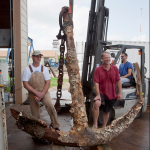 Chatham in heavy currents on June 9, 1792. Previous searches for the anchor had been focused in Bellingham Channel, where the main ship Discovery had been with high seas reported. The Chatham, a brig that was eventually captained by Peter Puget, was apparently not with the Discovery during the storm, the salvage team believes. The anchor was placed temporarily at the Northwest Maritime Center in downtown Port Townsend before being moved to Texas, where is was restored and is on display today.
Chatham in heavy currents on June 9, 1792. Previous searches for the anchor had been focused in Bellingham Channel, where the main ship Discovery had been with high seas reported. The Chatham, a brig that was eventually captained by Peter Puget, was apparently not with the Discovery during the storm, the salvage team believes. The anchor was placed temporarily at the Northwest Maritime Center in downtown Port Townsend before being moved to Texas, where is was restored and is on display today.

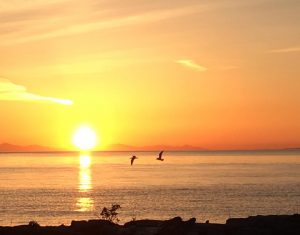 When my daughter, Amy Royce and her family moved out to the Pacific Northwest, it was initially to get away from the cold Wyoming winters, but it has been an amazing adventure for them in many ways. Amy always loved the rainforests and the beaches too, so the Pacific Northwest was the perfect location for her. In the two years since they moved to Washington, they have been hiking the amazing trails in the area, and of course, enjoying the sunsets by the water. Amy also had the opportunity to go to the Skagit Valley Tulip Festival, which is an awesome spring display of tulips…acres and acres of tulips. It is a beautiful sight. I got to see it years ago, when my sister lived in that area, but I look forward to seeing it again with Amy.
When my daughter, Amy Royce and her family moved out to the Pacific Northwest, it was initially to get away from the cold Wyoming winters, but it has been an amazing adventure for them in many ways. Amy always loved the rainforests and the beaches too, so the Pacific Northwest was the perfect location for her. In the two years since they moved to Washington, they have been hiking the amazing trails in the area, and of course, enjoying the sunsets by the water. Amy also had the opportunity to go to the Skagit Valley Tulip Festival, which is an awesome spring display of tulips…acres and acres of tulips. It is a beautiful sight. I got to see it years ago, when my sister lived in that area, but I look forward to seeing it again with Amy.
In the two years that Amy has lived in Washington, I have seen her creative side simply blossom. She has done 
 a few sessions at one of the places where you paint and have wine, and she liked it so much that her husband, Travis bought her a set of paints and an easel. Amy’s creative side just bubbled out of her. Every new painting is better than the last. I wish I had such talent. She and her sister Corrie Petersen, both seem to have inherited that talent…but they did not get it from me, hahaha!! Amy also loves to take pictures of the area she lives in, and posts them to her Facebook. They are beautiful, and since I love photography, I’ll take a little credit and say that she inherited that ability from me…whether it’s true or not. The pictures she takes while hiking are amazing, and the subject matter doesn’t hurt anything either. Still, the eye of the photographer is the main part of great photography.
a few sessions at one of the places where you paint and have wine, and she liked it so much that her husband, Travis bought her a set of paints and an easel. Amy’s creative side just bubbled out of her. Every new painting is better than the last. I wish I had such talent. She and her sister Corrie Petersen, both seem to have inherited that talent…but they did not get it from me, hahaha!! Amy also loves to take pictures of the area she lives in, and posts them to her Facebook. They are beautiful, and since I love photography, I’ll take a little credit and say that she inherited that ability from me…whether it’s true or not. The pictures she takes while hiking are amazing, and the subject matter doesn’t hurt anything either. Still, the eye of the photographer is the main part of great photography.
While we wish that she lived closer to us, we always look forward to the trips we take out to see her and her 
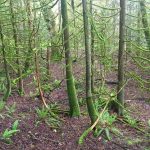 family. Since we love to hike too, we went on a few of the trails while we were there the last time, but the next time we go, it will be in the summer, and we are going to have her take us to some of the places she went last month, because those places were stunning. It’s funny, because Amy was never so much the hiker. She usually went to the gym for her exercise, and suddenly she likes to get out in nature too. Something I find totally awesome. Today is Amy’s birthday. Happy birthday Amy!! Have a great day!! We love you!!
family. Since we love to hike too, we went on a few of the trails while we were there the last time, but the next time we go, it will be in the summer, and we are going to have her take us to some of the places she went last month, because those places were stunning. It’s funny, because Amy was never so much the hiker. She usually went to the gym for her exercise, and suddenly she likes to get out in nature too. Something I find totally awesome. Today is Amy’s birthday. Happy birthday Amy!! Have a great day!! We love you!!
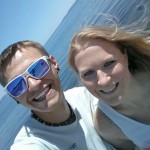
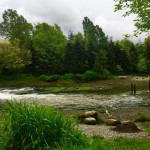 As hard as it is to see your children move far away, sometimes there is an aspect of it that truly warms your heart. That is how it has been for me in this first year of the new journey my daughter, Amy Royce and her family have begun. I won’t lie and say that it has been an easy transition for me, because I still miss them very much, but the pure joy they feel in their new surroundings is so obvious, that I can’t help but be happy for them. The first six months of their time was spent in a little apartment, while they got a feel for the area. Then, after deciding that the Bellingham area was where they wanted to be, they found a cute house in the suburb of Ferndale, about 10 minutes north of Bellingham.
As hard as it is to see your children move far away, sometimes there is an aspect of it that truly warms your heart. That is how it has been for me in this first year of the new journey my daughter, Amy Royce and her family have begun. I won’t lie and say that it has been an easy transition for me, because I still miss them very much, but the pure joy they feel in their new surroundings is so obvious, that I can’t help but be happy for them. The first six months of their time was spent in a little apartment, while they got a feel for the area. Then, after deciding that the Bellingham area was where they wanted to be, they found a cute house in the suburb of Ferndale, about 10 minutes north of Bellingham.
Amy hit the jackpot at Rice Insurance, and they didn’t get a bad deal either, because Amy is an amazing insurance agent. Her work is located just a few blocks from Bellingham Bay, and for Amy, that is ideal. Part of 
 the draw of the Pacific Northwest for Amy, was to live near the water, and that has been a dream come true. Amy and her husband, Travis who have never been really fond of our favorite pastime…walking, have taken it up anyway. I’m sure that it’s hard not to, when the trails you have found take you to the waters edge. Every trek they take is filled with the beauty of the rain forest, and trust me…that is beautiful.
the draw of the Pacific Northwest for Amy, was to live near the water, and that has been a dream come true. Amy and her husband, Travis who have never been really fond of our favorite pastime…walking, have taken it up anyway. I’m sure that it’s hard not to, when the trails you have found take you to the waters edge. Every trek they take is filled with the beauty of the rain forest, and trust me…that is beautiful.
Amy and Travis have a large, beautiful back yard, and they love to sit out by their fire pit in the evenings, have dinner, and watch for hummingbirds, which seem to flock to the yard for their dinner too. Amy has been able to get some great pictures of the feeding frenzy. Another interesting item for Amy has been the snails and slugs, since they are not real common in Casper, except on the mountain, but up there, you kind of have to watch out where you walk a little bit, or you’ll step on one…and 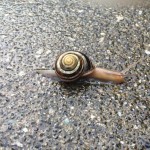
 that would break Amy’s heart, because she loves them. The biggest draw for Amy, is the possibility of seeing dolphins anytime they are near the water. Amy has always loved dolphins, and really whales and most of the other sealife found on the beach or in the water near the beach. That is something that gets them out for a walk too. Now they are always looking for new horizons to continue their journey on, and that makes me happy for them. Today is Amy’s birthday. We especially miss our girl on these special days. Happy birthday Amy!! Have a great day!! We love you!!
that would break Amy’s heart, because she loves them. The biggest draw for Amy, is the possibility of seeing dolphins anytime they are near the water. Amy has always loved dolphins, and really whales and most of the other sealife found on the beach or in the water near the beach. That is something that gets them out for a walk too. Now they are always looking for new horizons to continue their journey on, and that makes me happy for them. Today is Amy’s birthday. We especially miss our girl on these special days. Happy birthday Amy!! Have a great day!! We love you!!

